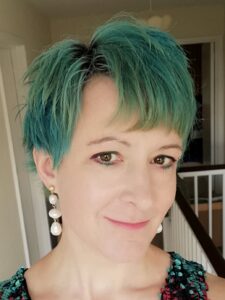 I joined the Romantic Novelists’ Association in 2008 and went to my first conference that year. As a newish editor (I was working for a digital-first publisher) and a very newly published writer, I was impossibly excited and shy all at once.
I joined the Romantic Novelists’ Association in 2008 and went to my first conference that year. As a newish editor (I was working for a digital-first publisher) and a very newly published writer, I was impossibly excited and shy all at once.
The conference had its moments of terror, such as when I went into the bar to find it deserted (where had all my new friends gone?). But these were outweighed by all the moments of friendliness and welcome: as I fled the scarily deserted bar, I walked past an open window to the accommodation block and was hailed by all my new friends, who summoned me to join the kitchen party they were having. And by the time I left on Monday morning, I knew I’d found my people.
For many of the RNA’s longstanding members, it’s important for us to try to make sure any new members we meet end up feeling the same way. We don’t always manage it—we are writers, after all, a typically shy, introverted bunch who only warm up after a glass of wine—but we’re determined to do our best!
 For me, that desire to make all new members feel that they’d “found their people”, prompted me to organise the New Writers’ Scheme for several years—until 2019, when I moved on to become the RNA’s Vice-Chair. It also led to my enthusiastic involvement in the RNA’s initiatives to make our organisation a more welcoming and inclusive place for writers from groups currently under-represented in publishing.
For me, that desire to make all new members feel that they’d “found their people”, prompted me to organise the New Writers’ Scheme for several years—until 2019, when I moved on to become the RNA’s Vice-Chair. It also led to my enthusiastic involvement in the RNA’s initiatives to make our organisation a more welcoming and inclusive place for writers from groups currently under-represented in publishing.
The path to traditional publishing for, for instance, ethnic minority writers and LGBTQIA+ writrs (particularly those who write “own voices” books) is disproportionately harder than for straight white writers (and goodness knows, it’s hard enough for them as well!). This means that writing organisations often have a membership that reflects the state of publishing as it is (straight, white, middle-class) rather than publishing as it could be. Which, in turn, means that whilst someone (like me) who fits that demographic might feel instantly at home in the RNA, someone who falls outside the demographic might not.
As part of our ongoing endeavours to make everyone feel welcome, we’ve changed the venues for our events to make them more accessible to writers with mobility difficulties, we’ve updated our publicity materials to display a (slightly) wider diversity of race and gender, we offer gender-neutral toilets, we’ve created our Rainbow Chapter for LGBTQIA+ members, and we continually revisit our criteria for both membership and entry to our awards to ensure that we include as wide a range of writers and books as possible.
We’ve also embarked on an expansion of the bursaries the RNA has always offered to members in financial need. Over the last couple of years, enabled by the overwhelming generosity of many of our members, we’ve extended them from simple bursaries into grants which offer membership, not only to writers who can’t otherwise afford the membership fee, but to writers from under-represented groups.
This reflects the RNA’s awareness that lack of income isn’t the only barrier that writers meet, and that as an organisation, we need to do what we can to decrease those barriers, or to at least help writers surmount them. Our endeavours to improve the RNA’s inclusivity and diversity are, like so many things in a writer’s life, a work in progress. We’re always open to suggestions (send here, please! imogenhowson@romanticnovelistsassociation.org). And with work, determination, and a willingness to listen and get better, every day we move the RNA closer to being the place where all writers find their people.
Imogen is the Vice-Chair of the Romantic Novelists’ Association. She writes fantasy and science fiction for young adults, and is the winner of the young adult category of the Romantic Novel of the Year Award 2014, and of the Elizabeth Goudge Award in 2008 and 2017.



